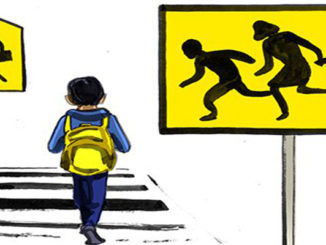
SAT scores dropped significantly for the class of college-bound seniors this year. All three sections saw declines — and the numbers were down for male and female students alike.
At the same time, SAT scores showed continued patterns in which white and Asian students, on average, receive higher scores than do black and Latino students. And, as has been the case for years, students from wealthier families score better than do those from disadvantaged families. These and other figures — including new data on Advanced Placement participation — are being released today by the College Board.
Over all, scores dropped two points on critical reading, two points on mathematics and three points on writing. The seven-point decline across all three sections compares to a one-point decline the prior year, and no change the year before that.
Here are the figures for the last five years:
SAT Averages
| Year | Critical Reading | Mathematics | Writing |
| 2011 | 497 | 514 | 489 |
| 2012 | 496 | 514 | 488 |
| 2013 | 496 | 514 | 488 |
| 2014 | 497 | 513 | 487 |
| 2015 | 495 | 511 | 484 |
The reading score has not been so low as far back as the College Board’s annual report, which dates to 1972. The mathematics score hasn’t been this low since 1999. And the writing score is the lowest since that portion of the test was created in 2006.
The ACT announced its scores — which were flat for the year — last week.
Both the ACT and SAT reported that more students took the tests than ever before. (Students may take both tests, and guidance counselors in parts of the country where the SAT was once dominant now report more students taking both exams.) But the new data show that the ACT has opened a significant lead in terms of test takers. As recently as 2011, more people took the SAT than did the ACT. This year, more than 1.9 million people took the ACT and just under 1.7 million took the SAT.
The release of SAT scores comes at a significant time for the College Board. A new SAT will launch in the next year, and it arrives as a growing number of colleges are dropping requirements that applicants submit SAT or ACT scores, and as many parents of elementary and secondary school students are rebelling against standardized testing generally.
According to the National Center for Fair and Open Testing, a critic of the SAT, 27 colleges and universities have dropped ACT/SAT requirements in the last year — more than have dropped in any other 12-month period. And about 40 colleges have ended requirements since the College Board announced a revamping of the SAT. That figure is notable in that the last time the College Board was working on a new SAT, relatively few colleges made decisions to drop the requirement, seeming then to prefer to wait for the new test.
Much of the criticism from colleges has been about fears that the SAT scores seem to reflect family income, and that, on average, black and Latino students receive significantly lower scores than white and Asian students do.
Clearly sensitive to these issues, the College Board webinar for reporters started with David Coleman, the organization’s president, saying that “we need fewer tests that do more.” He also said he favors tests that do not hold people back but that “deliver opportunities for students.” Coleman argued that the College Board’s tests do so — with the PSAT and SAT helping students obtain scholarships and the Advanced Placement program helping students obtain college credit.
He also said that almost 300,000 people have visited the Khan Academy online to learn about how that organization — known for its online educational programming — will be offering tutoring to prepare for the new SAT. That tutoring will be free, and Coleman said he hoped that the Khan Academy would end up providing as much help to those taking the SAT as do the many services that charge students and their families.
Coleman also stressed that an increasing number of low-income students were having their fees waived to take the SAT, which also suggests more of them are taking the exam. For the class of 2015, 25.1 percent of students had fee waivers, up from 23.6 percent the prior year.
But despite these efforts, the pattern with regard to family income remained the same. In each of the three parts of the SAT, the lowest average scores were those with less than $20,000 in family income, and the highest averages were those with more than $200,000 in income, and the gaps are significant. In reading, for example, the average for those with family income below $20,000 is 433, while the average for those with income of above $200,000 is 570.
The figures on race and ethnicity also show large and growing gaps. These gaps could become particularly troublesome for colleges that rely on the SAT (and for the College Board) if the U.S. Supreme Court sets new limits or restrictions on the consideration of race in admissions, as justices could do in a case they will consider in the forthcoming term. One reason given by many colleges that have gone SAT optional is that they are uncertain about the value of the SAT in evaluating black and Latino applicants.
Here are the numbers from this year:
Mean SAT Scores by Race/Ethnicity, 2015
| Group | Critical Reading | Mathematics | Writing |
| American Indian | 481 | 482 | 460 |
| Asian-American | 525 | 598 | 531 |
| Black | 431 | 428 | 418 |
| Mexican-American | 448 | 457 | 438 |
| Puerto Rican | 456 | 449 | 442 |
| Other Hispanic | 449 | 457 | 439 |
| White | 529 | 534 | 513 |
The numbers show that Asian-American and white test takers are comfortably in the 500 range for all three parts of the test, while other groups are in the 400s and for the most part in the mid-400s for all three parts.
Everybody’s scores are going down except for Asians. The National Center for Fair and Open Testing has kept track of the gains on the combined scores on all three sections, by race and ethnicity, since the introduction of the writing test for the class of 2006. Those statistics, combined with the new data, show that between the class of 2006 and the class of 2015, every group except Asians has seen its totals go down.
Combined SAT Score, and Changes Since 2006, by Race/Ethnicity
| Group | Combined Score 2015 | Change Since 2006 |
| American Indian | 1423 | -27 |
| Asian-American | 1654 | +54 |
| Black | 1277 | -14 |
| Mexican-American | 1343 | -28 |
| Puerto Rican | 1347 | -16 |
| Other Hispanic | 1345 | -26 |
| White | 1576 | -6 |
AP Exams
The College Board also released new data on Advanced Placement exams, noting that 1.5 million students this year earned a score of three or higher on an AP exam. (That score frequently qualifies a student for college credit.) That is a gain from 1.4 million students in 2014.
But on the AP tests as well, there is a clear racial and ethnic gap, with 72 percent of Asian test takers earning at least one three, compared to 66 percent of white students, 50 percent of Latino students, 46 percent of Native American students and 32 percent of black students.
Scott Jaschik, Editor, is one of the three founders of Inside Higher Ed.



